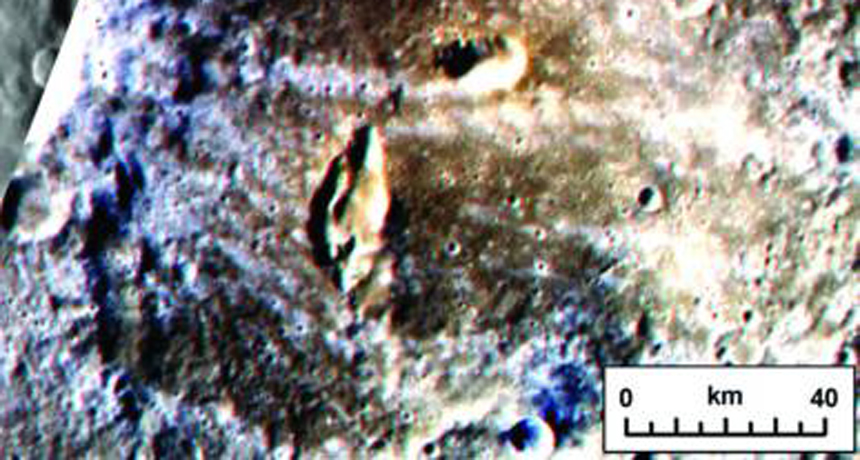Mercury’s surface once exploded in volcanoes

Two volcanic vents (center) on the floor of Mercury’s Kipling crater are shown in this false-color MESSENGER image. Volcanic ash appears in brown.
Johns Hopkins University Applied Physics Laboratory/Carnegie Institution of Washington/Brown University/ NASA







